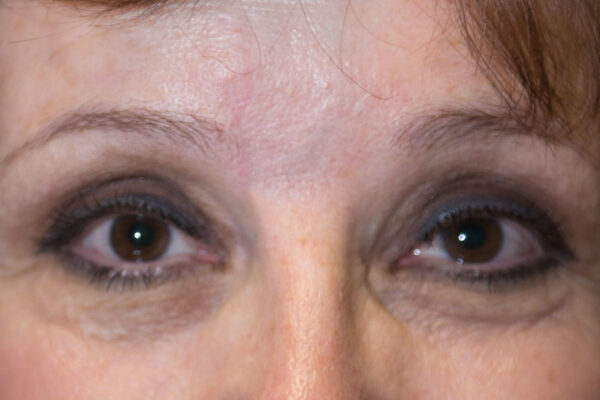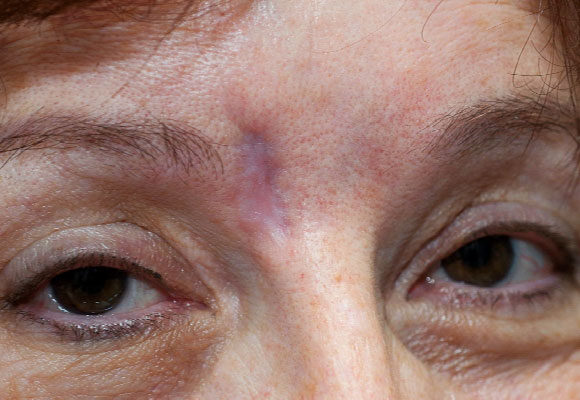Learn more about facial scar revision and the techniques used to improve their appearance, as a keen understanding of facial anatomy, scar formation and healing is needed to get the best results, and a skilled surgeon expert in facial plastic surgical techniques should perform the procedure.
Facial scar revision is frequently needed after trauma and certain surgeries. A keen understanding of both facial anatomy, the nature of scar formation and healing are needed to get the best result. Any time skin and deeper tissues are injured or intentionally cut, as in surgery, they will form a scar. There is no getting around it. Certain people form more noticeable scars than others and thicker skin scars more than thinner skin. Preventing scarring is crucial in surgery, and we employ fine stitches and use gentle technique for skin closure. When scars do form, often just removing the scarred tissue and reclosing the site with better technique can greatly reduce the scar. Other times moving skin around, or even using skin grafts, is necessary to improve the scarring.
Why do scars form?
Scars form to repair trauma. Our bodies are amazing at healing themselves, but they don’t always do it in the prettiest manner. Scarred skin is different than naturally developed skin. Our natural skin has a very organized set of layers that allow it to be soft and supple, yet very strong and impervious to our environment. When scarring occurs, these layers are often interrupted and the skin heals as a solid mass of dense tissue, full of collagen and fine blood vessels. This new skin is generally not as stretchy or pliable, and initally looks pink due to the small blood vessels in it. Over time the scar will soften and fade to a more normal color, but may never completely match the surrounding skin. If there was traction on the edges while it was healing, the scar can widen as it forms.
Can you completely remove a scar?
You can never completely remove a scar, but you can do many things to make it look better, and sometimes almost invisible. Scar revision involves lessening the appearance of scars by many techniques.
What techniques are used to hide scars?
Hiding scars can be done by re-orienting them into natural skin folds, changing their shape to a more random appearance, and simply making them smaller and thinner with better closure techniques.
Do over-the-counter scar creams work?
A few have been shown to help, but much of the evidence is anecdotal. Many people swear by products such as Mederma or vitamin E. If they work for you, that’s great, but don’t count on them making a dramatic difference. Silicone gels and pads worn over the scars have been shown in respectable clinical trials to reduce the appearance of scars. These will cost a bit more, but may be worth it if a scar is in a very noticeable place. Many times after scar revision, we recommend the use of these products to maximize the improvement in appearance.
Who can perform scar revision?
A surgeon expert in facial plastic surgical techniques should perform scar revision. Dr. Harris is a fellowship trained oculoplastic surgeon and member of the American Society of Ophthalmic Plastic and Reconstructive Surgery (ASOPRS). ASOPRS trained surgeons spend an additional 2 years learning the fine techniques needed to operate around the eyes and face. Facial plastic surgery is their one and only focus.


